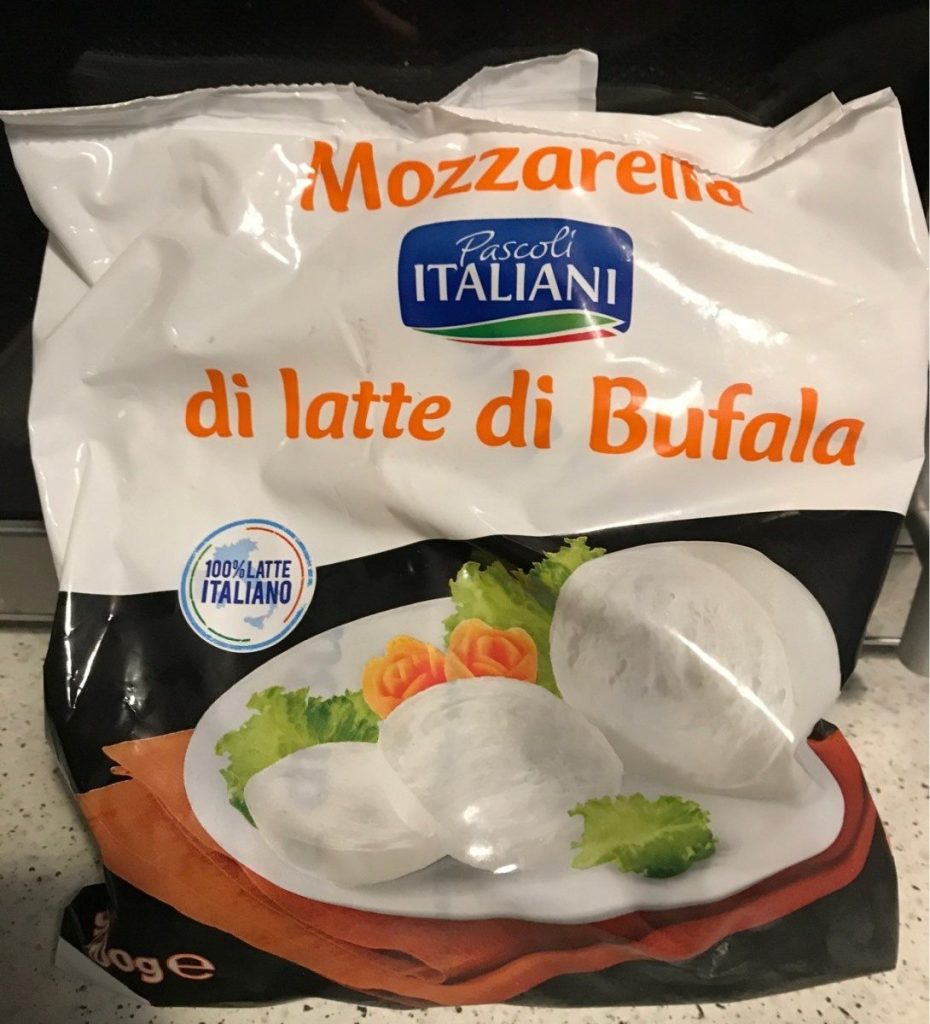There are many stories about the stubbornness of these animals. The domestic water buffalo (Bubalus bubalis) is a species of mammal in the order Paired-toed ungulates, within the family of horned ungulates and the subfamily of the bulls. Other names: water buffalo or domestic buffalo. The buffalo was a triple-purpose species, whose primary function was traction, as its pulling power was 50% greater than that of cattle, and it was used to haul stones and thick tree trunks, and to break up farmland. Its milk and meat are also used. Buffalo milk is also used to make a variety of cheeses, such as mozzarella, cheddar, and feta.
The lifestyle of the domestic buffalo
The domestic buffalo is an undemanding animal, eating dung, reeds, sedge, and marsh grasses, and is also trained against tuberculosis. More restless and shy than cattle, it is obedient and benevolent towards its keeper. But there are fewer animals more dangerous than the wounded buffalo bull. True, it usually only attacks when cornered.
Occurrence of the domestic buffalo
200 million buffaloes are raised in the world, more than half of them in India, South Asia, and China. Outside Asia, however, buffalo are kept in large numbers in Europe, Australia, North and South America, and some countries in Africa. Two types of water buffalo can be distinguished in terms of taxonomy and behavior: the river water buffalo in India and the west, and the swamp water buffalo in Asia, South Asia, and China. Outside Asia, they are found in the millions only in Egypt and Brazil. In Europe, Italy has the largest number of buffalo, with over 400,000, followed by Romania with only 20,000 buffaloes.
The diet of the domestic buffalo
Domestic buffaloes feed on terrestrial and aquatic plants. During floods and floods, they graze underwater with their heads above the water. Green fodder is widely used for intensive milk production and fattening. Possible forages include, among others, alfalfa, bananas, cassava, maize, oats, peanuts, sorghum, soya beans, sugar cane, beet leaves, stalks, or trimmings. Buffalo will also eat skunk cabbage, reed canary grass, and marsh grasses.

Pasture-raising, milk-producing
Its milk is porcelain white in color, has a pleasant flavor, is curdled more quickly than cow’s milk, and has a higher vitamin content. It has a fat content of up to 8%, and up to 16% during lactation (breastfeeding). 6 liters of milk can produce 1 kg of cheese. Some well-known cheeses that are also made from buffalo milk are mozzarella, feta, and cheddar. The meat is not as valuable as that of cattle, dark reddish brown, coarse fibred, less powdery, but higher in phosphorus and iron. Buffalo veal is equivalent to beef veal.

In the east of India, where milk is not consumed, the buffalo is kept only for its strength. However, in India, a notoriously high milk consumer where dairy products are a mainstay of the diet, the buffalo’s ability to produce milk is important. Although two-and-a-half times the number of the local variety of cattle, the zebu, is kept, 60 percent of the milk produced comes from buffalo. Compared to the zebu, the buffalo produces two to three times as much milk on a much poorer diet and its milk is more nutritious.
Interestingly, buffalo are not much used as a slaughtered animal in Asia, where only the older animals, aged ten to twenty years, are slaughtered, and the horns and thick buffalo hide are used as well as the meat. The literal waste of live buffalo, buffalo dung, is an important product, used as fertilizer for farmland and, when dried, as fuel.
The mechanization of agriculture has reduced the role of the buffalo herd in Europe, with the majority of the herd being dairy animals. In Italy, in particular, dairy buffalo are prominent. The main reason for this is the increased demand for mozzarella cheese, but also the fact that buffalo milk is not subject to EU production quotas, which allows them to be kept as an alternative to cattle.
Mozzarella di Buffala
Mozzarella di bufala also originates from the province of Campania. Within that region, it is mainly produced in the provinces of Caserta and Salerno.
Written evidence of the commercial use of buffalo milk dates back as far as the 14th century. The public had to wait until 1570 for the name ‘mozzarella’, when chef Bartolomeo Scappi put it on paper. It became a widely consumed product around the 18th century, thanks to the House of Bourbon, who set up a huge buffalo farm in Caserta.
The product was registered as a protected designation in 1996. Naturally, there are numerous rules governing the production of the original ‘Mozarella di bufala’. It may seem obvious, but one of the most important is that it must be made exclusively from buffalo milk. In this country, most mozzarella is made from cow’s milk. The composition of buffalo milk is different from that of milk from any other animal. It does not contain carotene and is therefore pure porcelain white in color. It is also higher in calcium and protein.

No artificial additives are added during the manufacturing process. It is not preserved, aged, or flavored. The process involves keeping the milk at 33-39 degrees Celsius to extract the most suitable fats. It is then placed in special steel vats where it is left to form solids and separated from the liquid. Once this is done, the maker (yes, it is still done by hand) checks the cheese himself to see if it has passed the “stretch test”.
Once the cheese reaches its final consistency using hot water, the only phase left is the final stage, which is done by machine. This is the only such operation. It is the machine that cuts the cheese into its final shape. The center of the original bufala mozzarella is soft and feels as if it wants to flow apart.
But what is buffalo meat like?
I recommend it for everything, the taste is a bit gamey. It’s also a good substitute for venison. Maybe just a little more aromatic, more pronounced flavour, but a lot cheaper. Buffalo meat is redder than beef but has a better fat distribution. It is more marbled, so it is also very good for baking. Every part of the buffalo can be used.
Buffalo meat can often be kept in the fridge for up to 3-4 weeks. They also believe that the buffalo’s slow growth rate is slower than that of cattle and that a year-and-a-half-old buffalo calf is more like an older calf in beef terms.
Cheek
The cheek meat is beautiful to roast
Stew
If you prefer stew with fat-free meat cubes, you can also choose leaner cuts of meat (such as thighs and shanks), which are often chewy in beef and perfectly fine in a stew in buffalo.
If you also want a more substantial gravy, it’s a good idea to cook tendons with lean meat. But if the stew needs to be really rich, and it is not a problem or even an expectation to have some fat or fat cover on the meat, then neck, shoulder, or, in the case of beef, leg, which is a classic stew base.
Liver
You can make veal liver from buffalo calf just as you can from beef. However, I do not recommend the liver of an adult animal, it is chewy and difficult to prepare.
Shranks – Round
I recommend Shranks or the rounds for classic, traditional stews. The shranks can be baked too.
Rump
A rounded rump, salt, and pepper and put it in the oven… give it time, and then roast it a bit, served with cold mayonnaise potatoes…, sensational!
Shoulder
The shoulder can be baked or boiled, but we recommend it as a stew.
Sirloin
The classic method is recommended for sirloin and sirloin steak. I like to cook the sirloin whole and the sirloin chateaubriand (double thick sirloin), but the classic sirloin can also be cooked whole.
Bones
The bones make a very good soup base. I always start my tarragon soup by boiling off a good portion of bones (as much as the water will just cover). When the meat is falling off, I remove the bone and continue making the soup. What I caution everyone against is buffalo stock. This soup has a characteristic cloudiness that tends to be a bit greyish.
Ribs
We haven’t talked about the ribs yet. It makes a very tasty soup. Eating cooked meat with good hot horseradish and mustard is a delight. But it can also be cooked whole. In that case, it should be simmered under foil until the meat starts to fall off the bone.
Tails
The tail! The classic oxtail soup. But all parts of the buffalo can also be used to make tarragon stew.
What makes water buffalo milk different from cow’s milk?
Water buffalo milk is very high in fat and casein, not easily digestible in its raw form, but very difficult to digest. We do not recommend it as a drink, but it is definitely worth tasting the food made from it; it is used as a base for mozzarella, burrata, ricotta di bufala, yogurt, and similar products. Italian Mediterranean buffalo milk is three times more expensive than cow’s milk, so don’t be surprised by the price tag on buffalo mozzarella! As these animals are only found in a few countries, mainly Italy and Bulgaria, most mozzarella is now made from cow’s milk. It is believed that the Italian Mediterranean buffalo breed was introduced to Italy in Roman times or later by barbarian invasions.
Last updated: September 24, 2023


